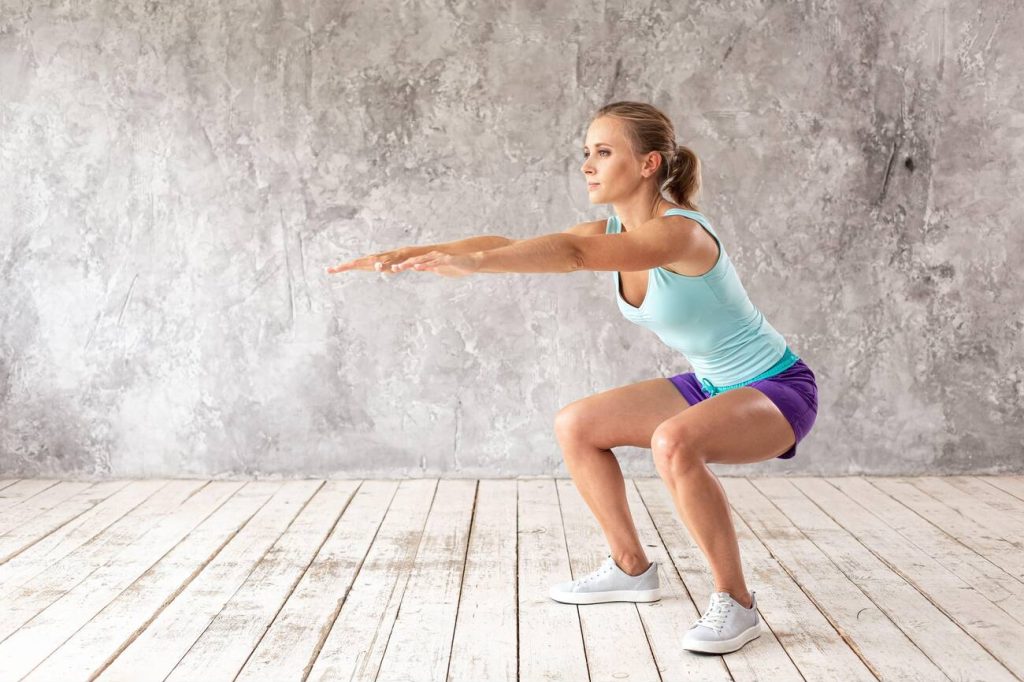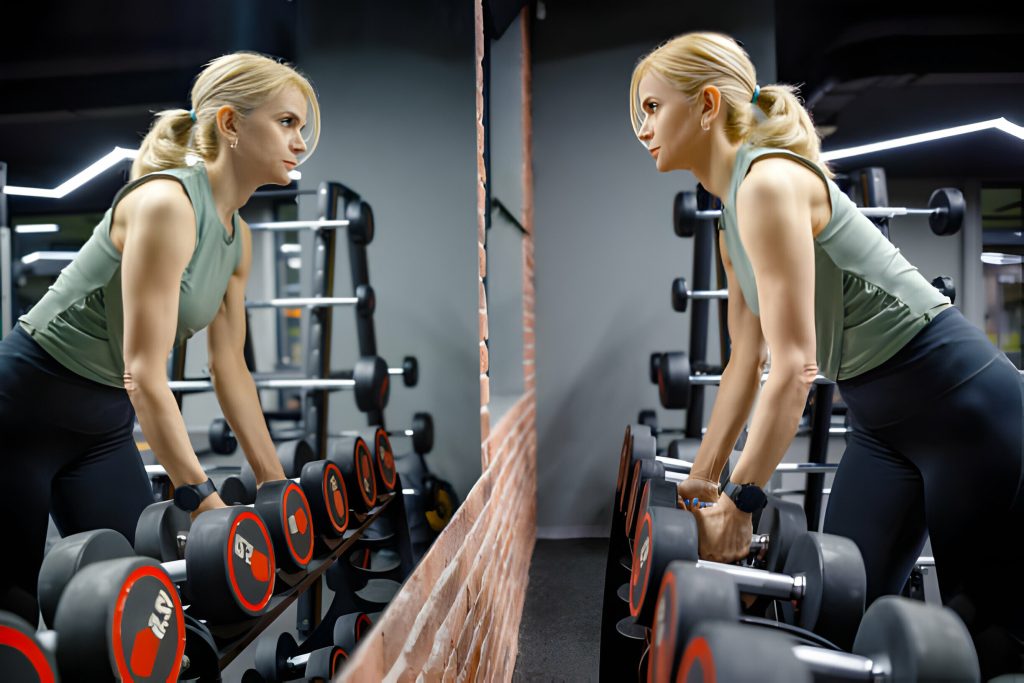Want to know the secret to getting those results you’ve been dreaming of? Look no further than squats! This beginner’s guide will show you exactly how many squats to do per day in order to see real changes. Squats are a powerhouse exercise that target multiple muscle groups and boost overall fitness. By following a gradual progression plan and incorporating effective variations, you’ll be well on your way to achieving your goals. Get ready to squat your way to success!
The Benefits of Squats for Beginners
If you’re a beginner, incorporating squats into your workout routine can provide numerous benefits such as improved lower body strength, enhanced balance, and increased stability. Squatting is a fundamental exercise that targets multiple muscle groups in the lower body, including the quadriceps, hamstrings, and glutes. As a beginner, it’s important to start with proper form and gradually increase repetitions to avoid overtraining or injury. You can also incorporate variations of squats to keep your workouts interesting and challenge different muscles. However, it’s crucial to listen to your body and avoid pushing yourself too hard. If you’re unsure about how to properly perform squats or want personalized guidance on your fitness journey, it’s recommended to consult with a fitness professional for expert advice and assistance.
Setting a Goal: How Many Squats per Day
Setting a specific target for the number of squats you do each day can help you track your progress and achieve your fitness goals. When setting goals, it’s important to focus on proper form to avoid injury and maximize results. Start with a rep count that challenges you but is still manageable, such as 3 sets of 12-15 reps. As you become more comfortable, gradually increase the number of repetitions or add variations for added benefits. Remember to listen to your body and take rest days when needed to prevent overtraining. Progression tips include incorporating different types of squats and seeking guidance from fitness professionals for personalized advice. By setting a goal and following these tips, you’ll be on your way to seeing results in no time.
Progression Tips for Seeing Results With Squats
To see results with your squats, gradually increase the number of repetitions and incorporate different variations for added benefits. Here are some progression tips to help you track your progress and maximize muscle engagement:
- Focus on proper form techniques: Ensure that you maintain a neutral spine, keep your knees aligned with your toes, and lower down into a deep squat position.
- Add resistance: As you become stronger, consider using dumbbells or a barbell to add extra weight and challenge your muscles.
- Try different squat variations: Mix up your routine by incorporating exercises like goblet squats, sumo squats, or Bulgarian split squats to target different muscle groups.
- Track your progress: Keep a workout journal or use a fitness app to record the number of reps, sets, and weights used during each squat session.
Effective Variations to Amp Up Your Squat Routine
Incorporating different squat variations into your routine can amp up the effectiveness of your squat workouts. Try adding dumbbell squats to your routine for an extra challenge and to target your upper body muscles as well. Jump squats are another great variation that adds a plyometric element, helping to improve power and explosiveness. Bulgarian split squats can be done with one foot elevated behind you, targeting each leg individually and improving balance. Sumo squats, where you take a wider stance and point your toes outwards, work the inner thighs more intensely. Finally, adding squat pulses to your routine involves staying in a low squat position and pulsing up and down slightly, which really burns out the quads. So mix it up and try these variations to take your squat workouts to the next level!
Listening to Your Body: Avoiding Overtraining With Squats
Listening to your body is crucial in order to avoid overtraining when incorporating squats into your workout routine. It’s important to understand your limits and give yourself proper recovery time. Here are some key points to keep in mind:
- Recognizing fatigue:
- Pay attention to how your body feels during and after squats.
- If you experience excessive soreness, pain, or decreased performance, it may be a sign of fatigue.
- Rest days:
- Schedule regular rest days in between squat workouts.
- Rest allows your muscles to recover and prevents overtraining.
Professional Advice: Consulting With Fitness Experts
Consulting with fitness experts can provide valuable guidance and personalized advice when it comes to incorporating squats into your workout routine. Seeking professional advice and expert recommendations through a fitness consultation can offer you the support you need to optimize your squatting technique and achieve desired results. These experts have extensive knowledge and experience in the field of fitness, allowing them to provide tailored recommendations that suit your individual needs and goals. Whether you’re a beginner looking for proper form or an experienced lifter aiming to increase intensity, their expert guidance will ensure you perform squats effectively and safely. By consulting with fitness professionals, you can receive professional support throughout your squatting journey, making it easier for you to see progress and maximize the benefits of this powerful exercise.
Maximizing Results: Combining Squats With Other Exercises
Now that you’ve consulted with fitness professionals and received their expert advice, it’s time to focus on maximizing your results by combining squats with other exercises. By incorporating different exercises into your routine, you can target multiple muscle groups and achieve even greater benefits. Here are some key ways to maximize your results:
- Combine squats with compound movements: Incorporate exercises like lunges, deadlifts, and step-ups to engage multiple muscle groups simultaneously.
- Add plyometric exercises: Include explosive movements like jump squats or box jumps to increase power and burn more calories.
- Incorporate resistance training: Use resistance bands or weights during squats to add extra challenge and build strength.
- Include core exercises: Planks, Russian twists, or bicycle crunches can help strengthen your core muscles, enhancing stability during squats.
The Role of Nutrition in Squatting for Results
To achieve optimal results from your squatting routine, it’s important to understand the role of nutrition and how it can support your fitness goals. The role of nutrition in squatting goes beyond just fueling your workouts; it plays a crucial part in muscle recovery and growth. To maximize your squatting results, you need to focus on meeting your nutritional requirements for squats. This means eating a well-balanced diet that includes an adequate amount of protein to support muscle repair and growth. Additionally, carbohydrates are essential for providing energy during intense workouts like squats. Fueling squats effectively also involves consuming enough healthy fats and micronutrients to support overall health and performance. So, make sure you’re eating for squatting results by prioritizing nutrient-dense foods that meet your body’s needs.
Common Mistakes to Avoid for Optimal Squatting
One common mistake to avoid for optimal squatting is neglecting proper form and technique. It’s crucial to prioritize proper form to prevent injuries and achieve optimal results. Here are some common mistakes to be aware of:
- Rounding your back: Keep your spine neutral throughout the movement, avoiding excessive rounding or arching.
- Allowing your knees to cave in: Maintain proper alignment by pushing your knees outwards as you squat.
- Not going deep enough: Aim for a full range of motion, with your hips sinking below parallel, to fully engage the muscles.
- Leaning too far forward: Maintain an upright torso position throughout the squat, distributing the weight evenly on your feet.
Tracking Your Progress: Monitoring Results With Squats
Monitoring your progress with squats is essential for tracking results and making adjustments to your fitness routine. By tracking progress, measuring results, and regularly engaging in progress monitoring, you can effectively evaluate your performance and make necessary changes to achieve your goals. Tracking progress allows you to see improvements in strength, endurance, and overall fitness level. It helps you identify areas where you may need to focus more attention or make modifications to optimize your workouts. Whether it’s increasing the number of reps or adding weights, progress monitoring enables you to tailor your squatting routine for maximum effectiveness. So don’t forget the importance of goal tracking when it comes to squats – it’s the key to continual improvement and achieving the results you desire.



